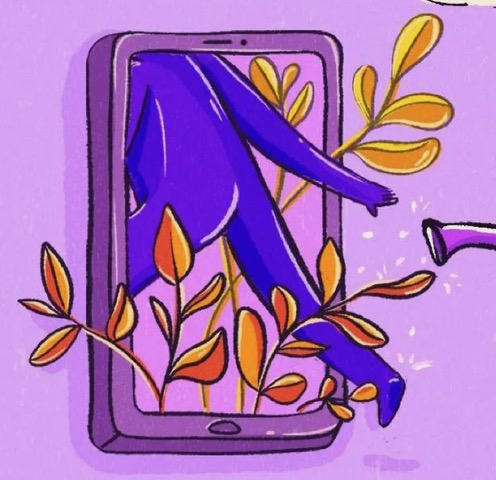The feminist helpline is a political bet to reduce the digital gender gap and make the internet a safe space to be inhabited.
We put the needs of survivors at the center and accompany their decisions to mitigate digital gender violence.
We seek to generate agency and autonomy in the people we accompany, provide them with digital self-defense tools and jointly build comprehensive protection strategies (physical, digital, emotional).


Thinking together to plan actions aimed to reduce violence or respond to attacks. Among some of the accompanying strategies we use are digital care for the prevention of violence and protection of information in the virtual space, advocating for comprehensive and daily protection habits, actions to respond and seek justice beyond the criminal system, building and strengthening regional networks to influence platforms and public policies, and more.

Methods to protect oneself in the digital space using devices, applications, or privacy and security settings within platforms or by increasing knowledge regarding technology.

The individual and collective possibility to do and act in favor of ourselves, our lives, our physical and digital bodies.
Harassment, threat, aggression, defamation or extortion with the intent to discriminate, dissuade or intimidate a person based on gender. Examples: threats and violent language; extortion, dissemination of false information; contact of false profiles; intimidating messages.
Examples: production and/or dissemination of non-consensual pornography; sexual extortion; sexual harassment and exploitation.
Harassment, threats, aggression, defamation or extortion of a sexual nature and/or for sexual purposes. It includes those acts that affect the free exercise of the victims' sexuality.
Examples: Production and/or distribution of non-consensual pornography; sexual extortion; sexual harassment and exploitation.
Contact of adults with children and adolescents, generally for sexual or extortion purposes through false identities, through social networks, online games, messages, chats, among others.
Sharing information online about someone's identity or private life without consent.
Examples: Disclosing personal data without authorization; revealing someone's location.
Aggressions, threats and discriminatory statements based on gender, which aim to affect historically vulnerable individuals or groups, disseminate hate speech and/or legitimize gender and sexual diversity stereotypes.
Examples: threats of physical/sexual violence directed at women and LGBTI population; discriminatory expressions based on gender stereotypes and roles; conservative and anti-rights actions.
Non-consensual access to devices and social network accounts, in order to intimidate, extort, manipulate or usurp personal and/or organizational information.Examples: installation of spyware; theft of passwords, data and images; website usurpation; manipulation and control of devices.
Examples: instalación de software espía; robo de contraseñas, datos e imágenes; usurpación del sitio web; manipulación y control de dispositivos.
Any act aimed at silencing or intimidating a person or group of people for reasons of gender. Generally, it happens against human rights defenders, LGBTI population, among others.
Examples: coordinated and massive attacks; censorship of content and web platforms; dissemination of false information that affects a specific person or group.